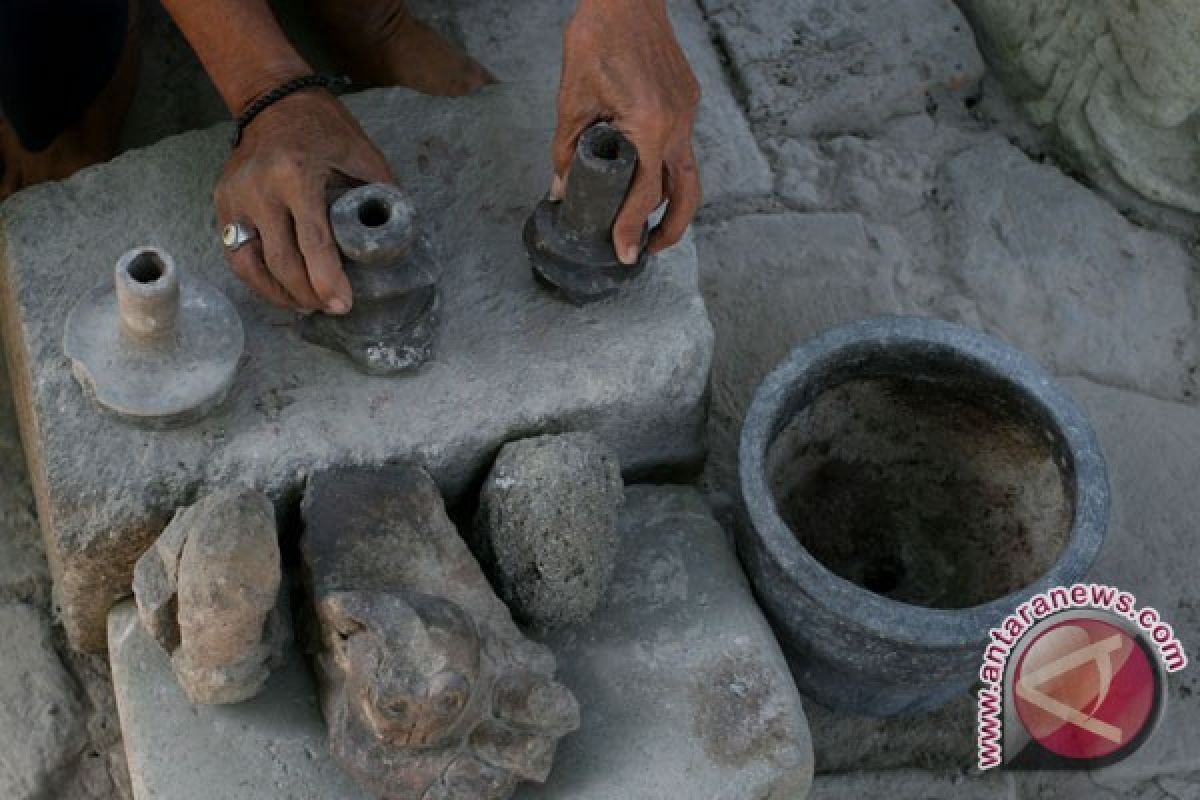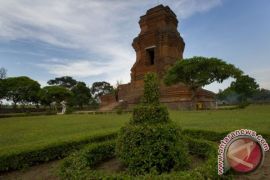For example, many statues from the Majapahit era at Semen village in Kediri district, East Java, are in damaged condition and therefore need to be repaired and preserved.
Aris Soviani, spokesman of the Ancient Heritage Conservation Center (BP3) in Trowulan, Mojokerto, said in Kediri on Monday that the Kediri district government should move the broken statues to a safer place.
The results of the extensive research and excaction work show that Triwulan was the location of the capital city of the Majapahit Kingdom for more than 200 years, namely from the 13th to the 15th century AD.
And thus Trowulan is valued as an important reminder of the long historical and cultural journey of Indonesia`s civilization.
Aris Soviani said at the Trowulan site hundreds of thousands of archeological items had been found buried underground as well as on the surface in the form of artefacts, ecofacts, and other features.
"Thus in an effort to preserve the statues that have been damaged by irresponsible people at Semen village in Kediri district, the local government should move them to a safer place," Aris said.
He said there was serious concern that irresponsible people would continue to vandalize the remains of the ancient Majapahit Kingdom, although local administration officials had promised to safeguard the relics.
But he added that the local government so far had not moved the broken statues from their original sites at Semen village to a safer area.
"We are waiting for an official letter from the Kediri district government if it wants the statues kept at the Trowulan Ancient Heritage Conservation Center. But I think it is much better if the statues remain at their original sites," Aris said.
Meanwhile, Kediri district administration spokesman Edhi Purwanto admitted that the local government had yet to do more on the advice of BP3 to relocate the broken statues.
It was because the local government did not have a museum to store the broken statues.
"The local government does not have a representative museum to store the broken statues. Moreover, moving the statues to another location is not an easy thing to do," Edhi said.
According to him, the site of the statues at Semen village in Pagu sub-district, Kediri, has been damaged by irresponsible people, even the poles of the fence around it have been pulled out and thrown into a nearby river.
Edhi said the site of three statues, resembling two dragons and a Wisnu god, was discovered by two local villagers, Imam and Apas, in their plantation area.
According to http://wikimapia.org; more research and preservation activities have been conducted at Trowulan site not only by the Center for Cultural Heritage Preservation of East Java, but also by other institutions and academics who have concern towards the heritage of the glorious Majapahit Kingdom.
As time progresses, many building sites and remnants of human settlements have been excavated, restored, maintained, and utilized such as the Mouse Temple, Gateway of Bajangratu, Baru Temple, Gentong Temple, the Gateway of Wringinlawang, Kedaton Temple, and the Sentonorejo Settlement.
Even thousands of other artefacts from Trowulan site have been discovered and are being preserved and maintained at the Majapahit Information Center, known as Pusat Informasi Majapahit (PIM).
Meanwhile, Trowulan Ancient Heritage Conservation Center official Joko Sujiharto said on Monday that Jember district in East Java also has ancient archeological objects in abundance.
But he added that unluckily a lot of the archeological objects were prone to thefts and therefore the local authorities should move them to safer locations.
Joko admitted that the archeological objects spread over a number of sites, among others at Klanceng and Duplang sites in Arjasa sub-district, Suko site in Jelbuk sub-district, Srono and Mojo in Sukowono sub-district, and Deres temple in Gumukmas sub-district, all in Jember.
He explained that Mojokerto`s Trowulan Ancient Heritage Conservation Center regularly monitored the existence of the archaeological objects in Jember, and that stolen antiquities have been reported to the related authorities.
According to him, some of archaeological objects found in Jember district have even been sold in foreign countries, such as Japan, Australia, the United States, and the Netherlands.
"Some of the historic objects have been allegedly stolen and sold to collectors of antiquities in foreign countries such as Japan, Australia, the United States, and the Netherlands," Joko Sujiharto said in Jember on Monday.
According to him, Jember district has around 400 archeological objects of various kinds, among others statues, kenong stones (type of Javanese musical instrument made of bronze resembling a gong), large upright standing stones (menhir), sarcophagus, dolmen, and several weapons of Majapahit kingdom.
He pointed out that massive antiquities theft occurred in 1998 in Arjasa sub-district in Jember, and some of the objects are still secured as evidence at Arjasa sector police office.
"We hope the local authority will improve the surveillance of the remaining archaeological objects, convince the local community of the importance of protecting the antiquities," Joko said.
(Uu.O001/HAJM/.A014)
Reporter: by Otniel Tamindael
Editor: Priyambodo RH
Copyright © ANTARA 2011









